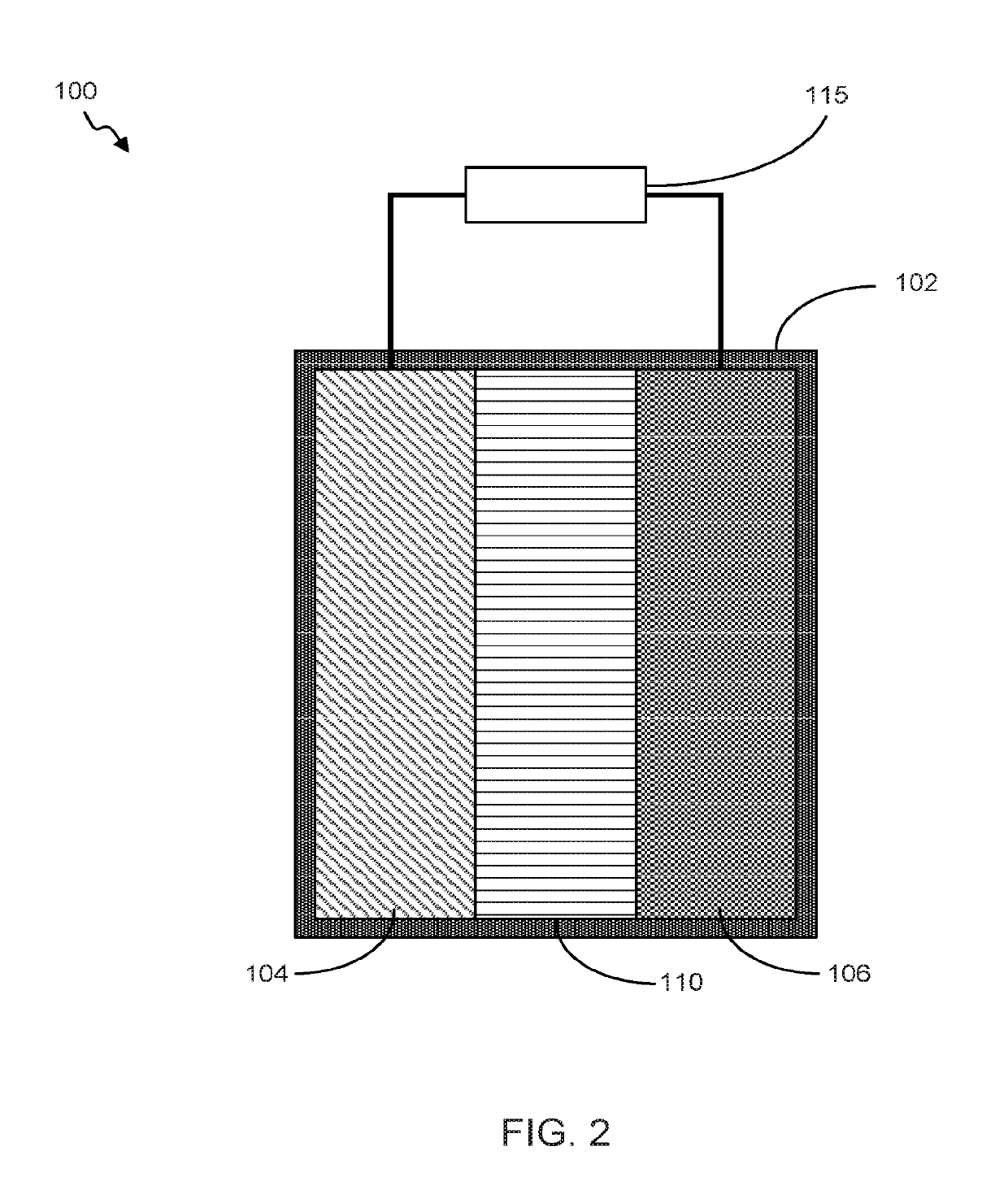Construction of Ultra High Capacity Performance Battery Cells
a battery cell, ultra-high-capacity technology, applied in the field of materials, can solve the problems of deterioration of other electrode components, degrading system components or catalyzing unwanted side reactions, and not always well characterized or understood mechanisms by which the surface controls reactivity, etc., to achieve the effect of enhancing the utility
- Summary
- Abstract
- Description
- Claims
- Application Information
AI Technical Summary
Benefits of technology
Problems solved by technology
Method used
Image
Examples
example 1
Amo of Tin Oxide Functionalized by Acetate / Chloride
[0230]A tin oxide AMO was synthesized using a single-pot hydrothermal synthesis method. Briefly, tin acetate (Sn(CH3COO)2) was dissolved in an ethanol / water solution and acidified by addition of hydrochloric acid (HCl). The resultant AMO nanomaterial was a soft, grey material and was formed into an electrode. The electrode was assembled in a battery cell against lithium metal and cycled by discharging to zero volts, followed by charging to 1.5 volts. FIG. 22 depicts a plot of the measured capacity versus cycle number, as well as a plot of the voltage as a function of time during cycling.
example 2
Amo of Tin Oxide Functionalized by Acetate / Sulfate
[0231]A tin oxide AMO was synthesized using a single-pot hydrothermal synthesis method. Briefly, tin acetate (Sn(CH3COO)2) was dissolved in an ethanol / water solution and acidified by addition of sulfuric acid (H2SO4). The resultant AMO nanomaterial was a grey, flaky material and was formed into an electrode. The electrode was assembled in a battery cell against lithium metal and cycled by discharging to zero volts, followed by charging to 1.5 volts. FIG. 23 depicts an electron micrograph image of the AMO nanomaterial, a plot of the measured capacity versus cycle number, as well as a plot of the voltage as a function of time during cycling.
example 3
Amo of Tin Oxide Functionalized by Acetate / Nitrate
[0232]A tin oxide AMO was synthesized using a single-pot hydrothermal synthesis method. Briefly, tin acetate (Sn(CH3COO)2) was dissolved in an ethanol / water solution and acidified by addition of nitric acid (HNO3). The resultant AMO nanomaterial was a grey, flaky material and was formed into an electrode. The electrode was assembled in a battery cell against lithium metal and cycled by discharging to zero volts, followed by charging to 1.5 volts. FIG. 24 depicts an electron micrograph image of the AMO nanomaterial, a plot of the measured capacity versus cycle number, as well as a plot of the voltage as a function of time during cycling.
PUM
 Login to View More
Login to View More Abstract
Description
Claims
Application Information
 Login to View More
Login to View More - R&D
- Intellectual Property
- Life Sciences
- Materials
- Tech Scout
- Unparalleled Data Quality
- Higher Quality Content
- 60% Fewer Hallucinations
Browse by: Latest US Patents, China's latest patents, Technical Efficacy Thesaurus, Application Domain, Technology Topic, Popular Technical Reports.
© 2025 PatSnap. All rights reserved.Legal|Privacy policy|Modern Slavery Act Transparency Statement|Sitemap|About US| Contact US: help@patsnap.com



